Bushcraft for kids is a great way to help children productively connect with nature. They are learning survival skills and will be having fun too.
Bushcraft for kids teaches vital life skills and everything nature can provide for us. There is nothing quite like that simple connection to nature; kids thrive outdoors, and bushcraft is a great way to learn and have a lot of fun. It is also a way for families to spend some quality outdoor time together, be fully present and engaged in a task, and, in our case, get muddy in the process! This article is not limited to children; you are never too young or old to enjoy bushcraft or learn essential survival skills. But where to start? We have you covered; here are ways to teach bushcraft for kids.
Foraging for materials with kids
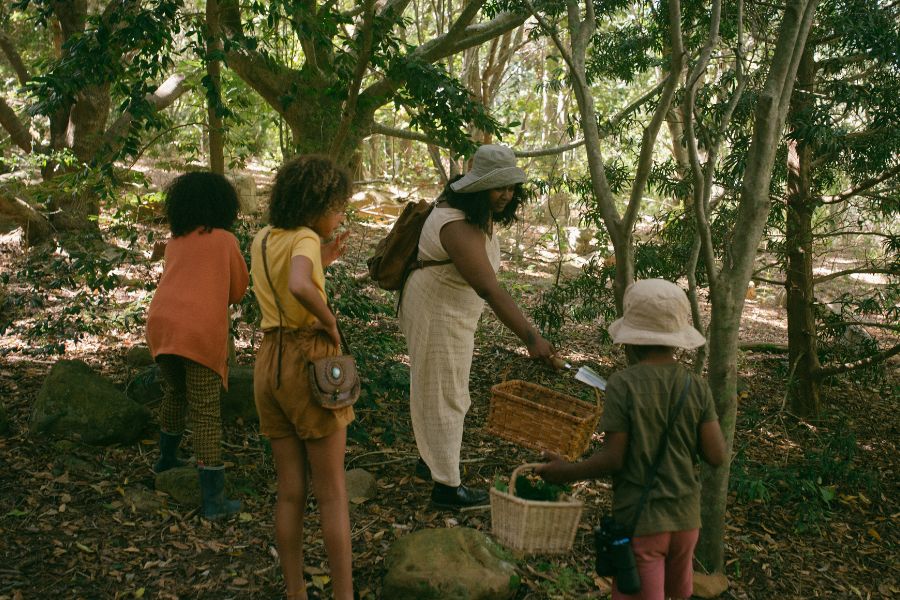
Go on a nature hunt for materials
Foraging is finding useful materials in the forest and learning to identify them. Great examples of foraging are seeds, berries, and flowers. Foraging is a great starting point for getting children interested and involved in bushcraft activities.
It’s intuitive for children to pick things up while exploring nature. A nature hunt is one of the simplest foraging activities to do with children. List or draw a range of items you can pick up or animals you might spot on a local walking route. Then, head out to your local space, and get foraging!
Our woodland walk scavenger hunt bingo card is available to download here. You can adapt this activity to all age groups.
Foraging teaches excellent skills, such as teamwork, communication, and knowledge of nature.
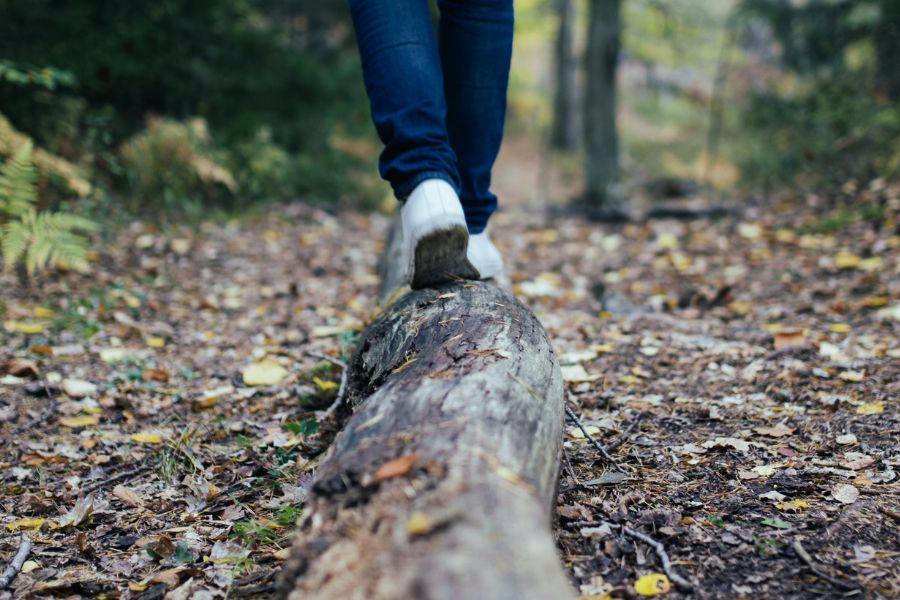
Follow a nature trail
For even more excitement and adventure, try a Gruffalo or Superworm Trail. You know you’re a parent when you can recite the words to The Gruffalo by heart! It’s certainly a firm favourite and a great way to incorporate reading/stories into a physical adventure.
For a list of the Gruffalo Trails in the UK and more information about visiting them read our full article here.
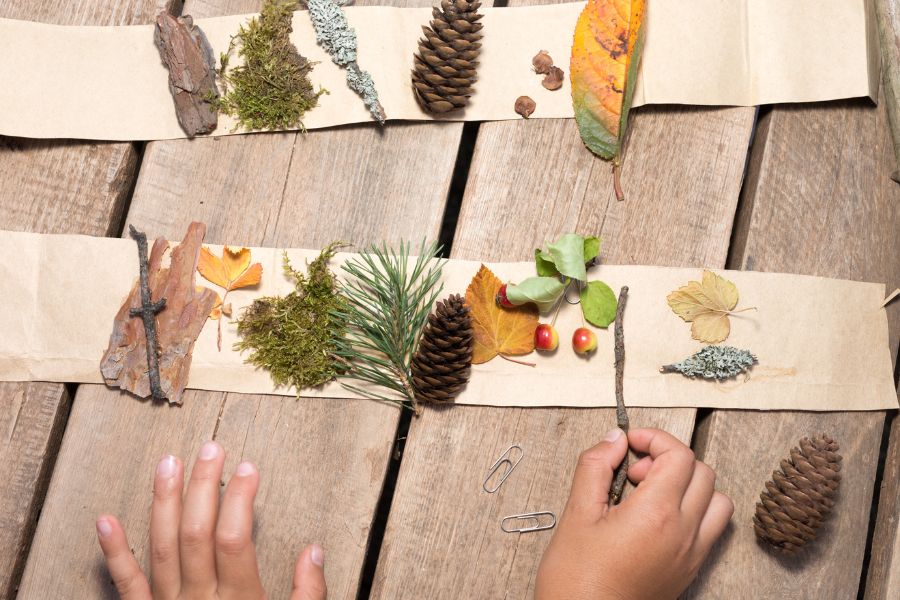
Get crafty with foraged materials
When you return home, you can use your findings to get creative and make all kinds of crafts, from stick people and rock painting to decorations and leaf art. The list is endless!
Here’s one of our favourite ways to decorate a Christmas tree from small twigs.
Foraging for food with kids
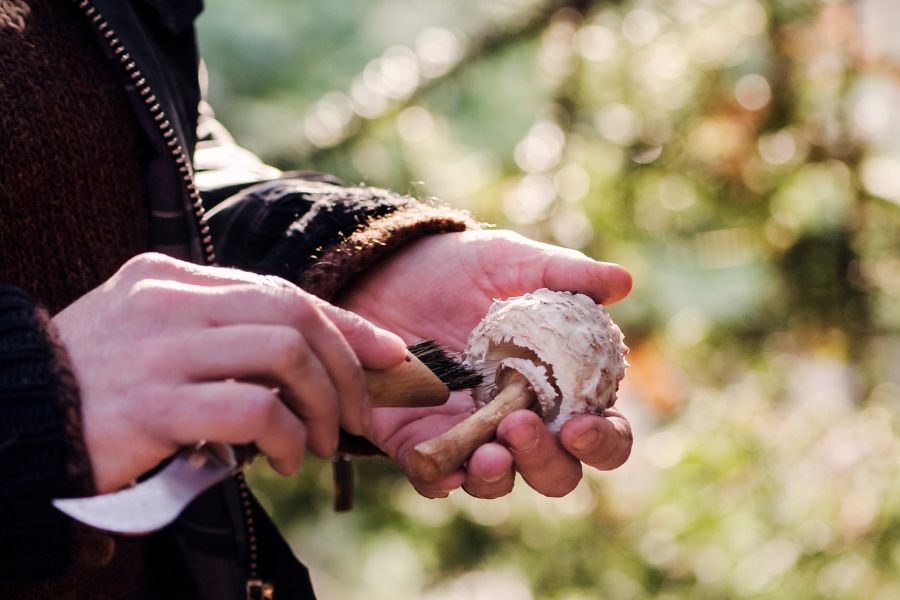
Please take care when foraging for food.
Warn your child not to eat anything before they’ve checked it with you. Many things can hurt or make you very sick, so always check thoroughly before eating anything you find in nature and be 100% sure that what you are about to eat is safe.
Also, ensure that they pick their edible plants from a safe location away from busy roads or down on a path frequented by dog walkers.
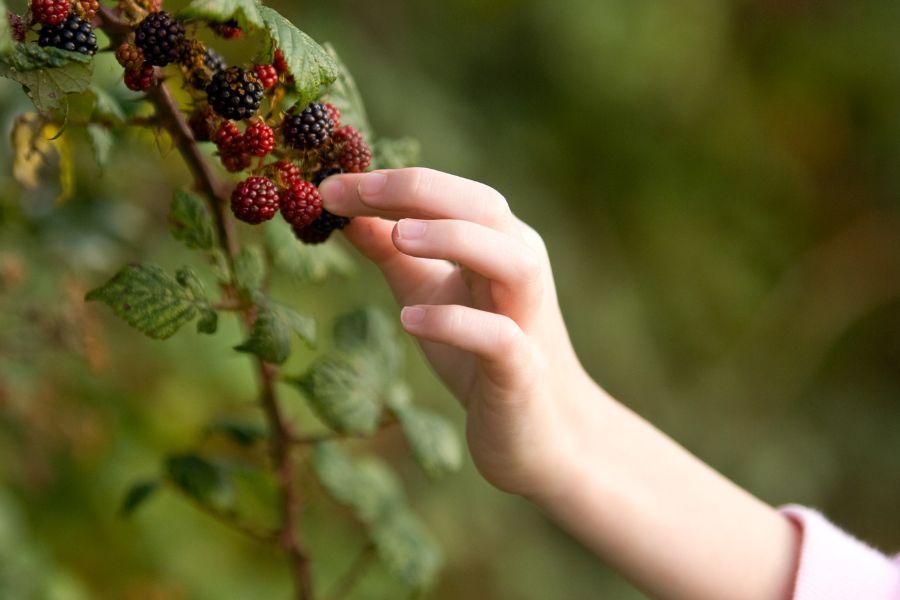
Why is foraging beneficial for kids?
Foraging is beneficial for children because it helps them understand and recognise the leaves and plants around them, feel the changing seasons, learn survival skills, and enjoy the excitement of finding their food.
There is no minimum age to forage with children. Just begin whenever you think it is suitable for your child.
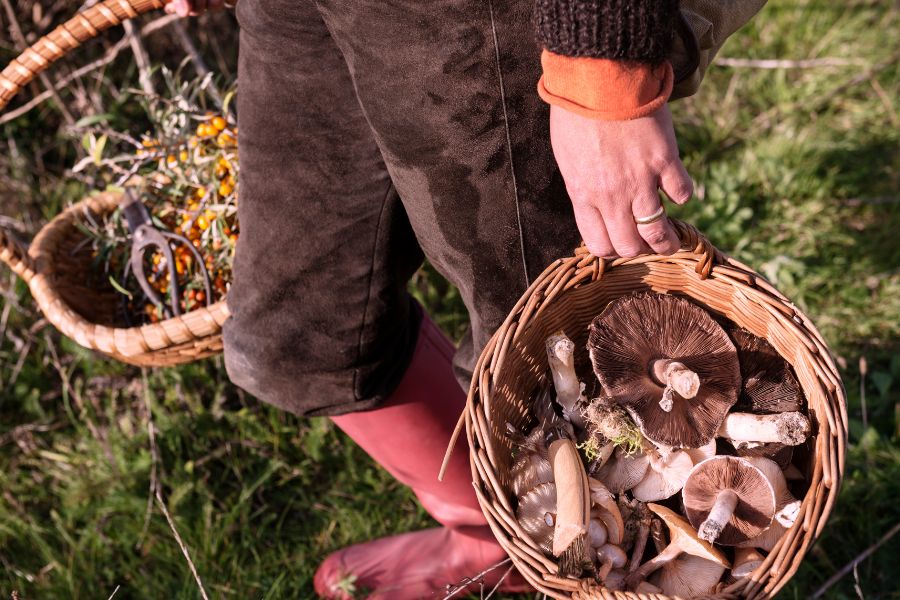
Foraging for beginners
Of course, it’s always good to check the internet or local guides before foraging. As you recognise plants, you’ll find out which plants are safe to eat or which taste best when eaten during a particular stage of their growth, while others can be eaten all year round.
A few common things we forage for, depending on the time of year, are Dandelions, Apples, Rhubarb, Damsons, Wild garlic, stinging nettles, raspberries and brambles (blackberries). But there are so many more!
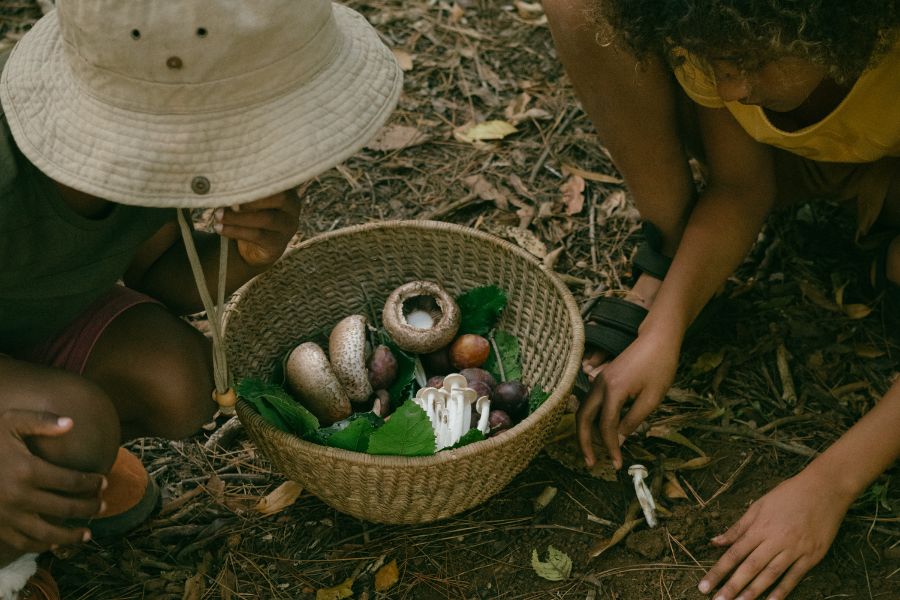
Our top tips for foraging for food with kids;
- Wear appropriate clothing, have children wear gloves to avoid getting stung or scratched, wellies, long-sleeved tops and pants.
- Take a sturdy waterproof bag for your foraging finds.
- Take a guidebook with you to compare with your finds.
- Make or buy a nature journal and use it to draw and record your foraging results.
- Snacks and drinks are essential if you are out for an extended period, as you will want to wash your foraged findings before eating.
- Find a local club or group to join and build confidence.
- Start small! If you identify and work with only one plant a month, that’s still 12 more than you knew before, after just one year.
Den/shelter building with kids
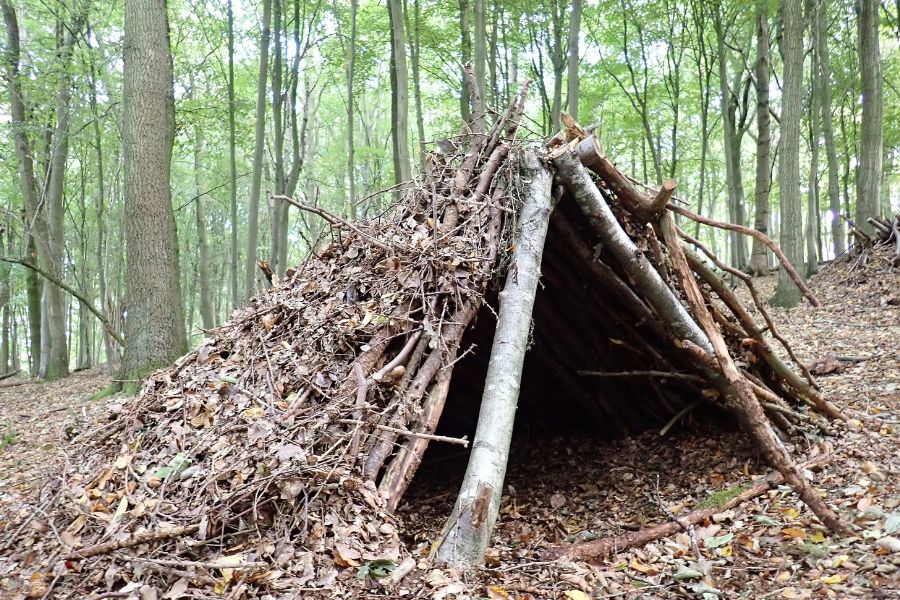
Building dens and shelters at an early age is a great way to introduce survival skills and promote creativity, communication, and teamwork.
How to build a simple den with kids
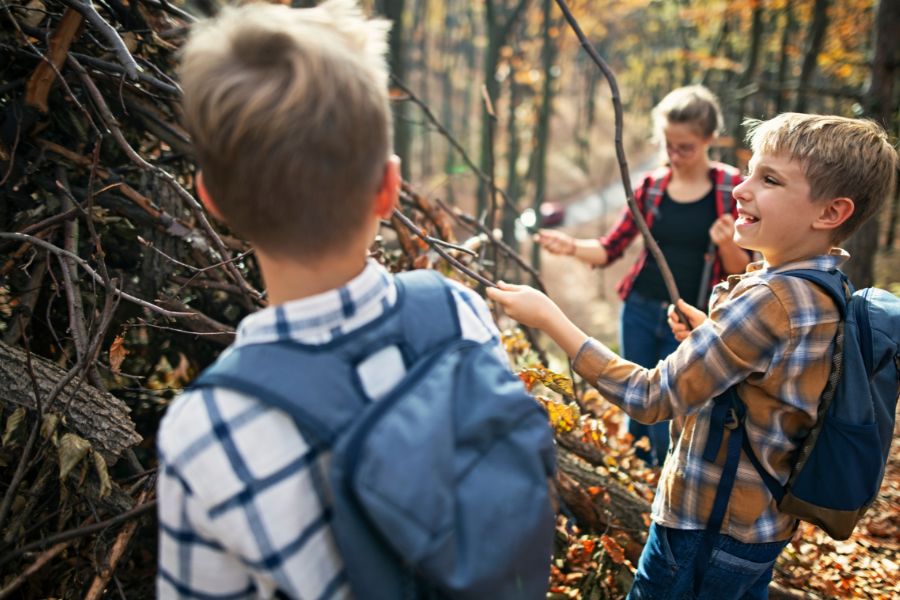
Choose an area with long sticks on the ground, large leaves, and sturdy trees. You may need to take some string or other essential supplies with you, but ultimately, the kids should be able to build a shelter using mostly natural materials. Encourage younger kids to use trees to help with the structure of their den.
Take a book out with you and have story time in the den or even a picnic. It’s a great way to immerse fully in nature. Incorporate creative writing and encourage kids to write stories about their shelters. A great way to spark a story is to talk about who will visit your den when you’re gone. Will it make a new home for woodland animals? Who could they be?
Whether you’re thinking of den building for imaginative play or making a safe place for kids to escape when they need some alone time, we have got you covered on creating the ultimate hideaway for children (and adults) to enjoy. Follow this link for our full den building article.
Teach kids how to have a campfire safely
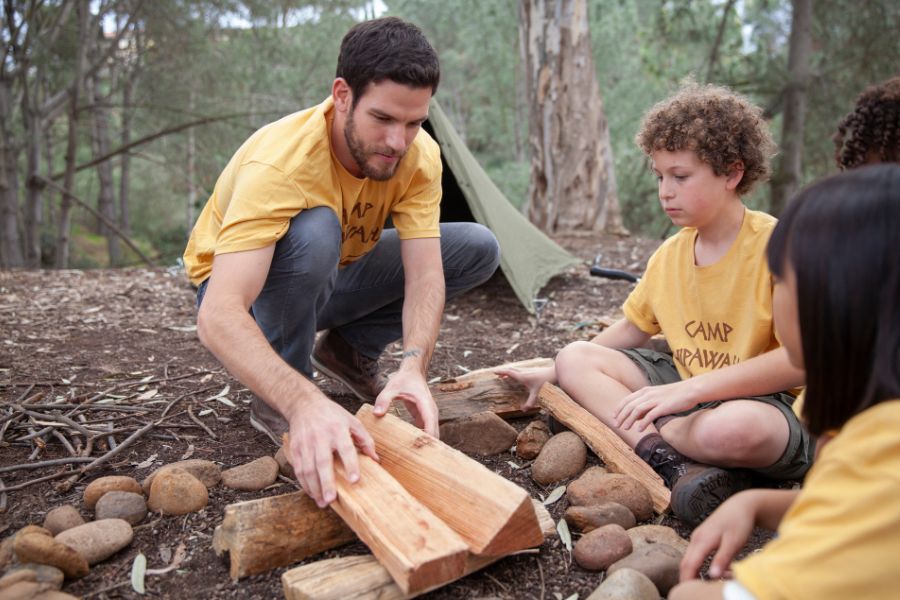
One of our favourite ways to round up a day spent outdoors is sitting around a campfire, enjoying tasty campfire-cooked food or toasting marshmallows. Having outdoor survival skills, such as knowing how to build a fire, is essential when spending a lot of time outside; basic fire building safety is invaluable.
Introduce children to campfires from 2-3 years old and have lots of conversations with them, teach them how to sit around a fire, walk around it safely and gather kindling.
Involve them as much as you can before the actual fire starts. Have them help to clear the area, gather kindling, and demonstrate that they know and observe safety practices near an active fire. Then, as they learn and grow, allow them more responsibility and always practice safe fire rules.
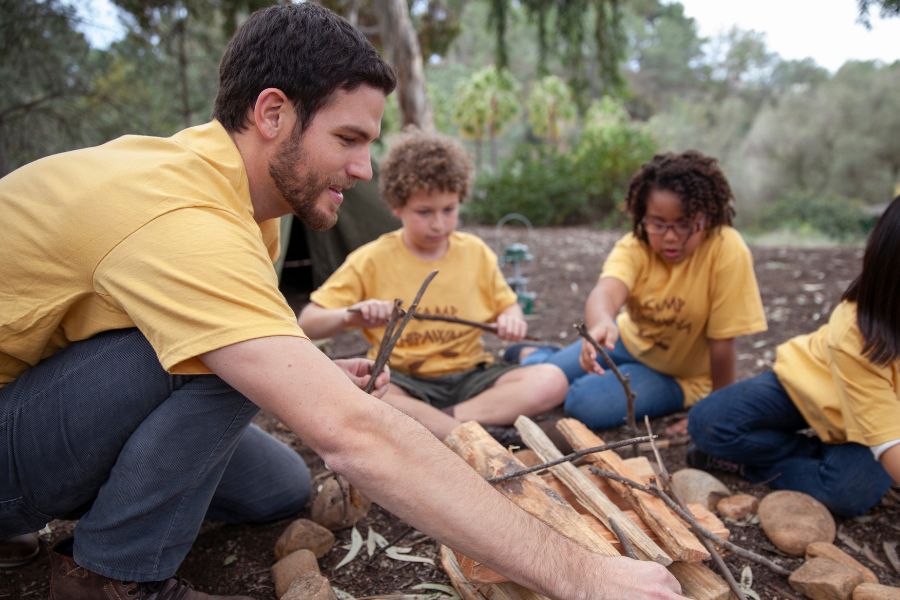
Fire safety tips for kids
Here are the rules we establish when teaching kids how to build a fire safely;
- Always check the area allows campfires.
- Check the weather; you want a clear and not too windy day for the best campfires.
- Ensure there’s nothing in the area where you’ll be making the fire.
- Teach kids that wood is the only thing that goes into a fire.
- Have a working water hose or a bucket filled with water near your fire.
Why not research campfire recipes and get kids involved in cooking healthy food outdoors? That way, there will be no problems eating healthy food.
Well, we can only hope!
Teach kids to safely use a bushcraft knife
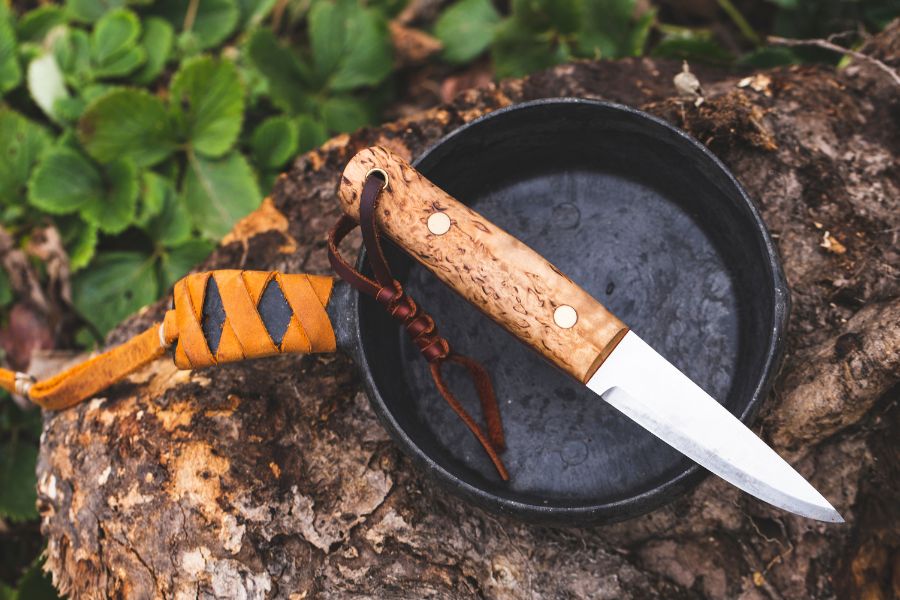
Kids and knives sound like a combination that should never go together, but teaching a child how to use a bushcraft knife safely and responsibly is both essential in bushcraft and a good lesson for them to learn.
Knife mastery requires patience, practice, and maturity. Using a bushcraft knife is a great way to complete practical tasks such as whittling and making pegs for tents.
Bushcraft knife safety;
- Supervision: Always supervise children when a knife is in their possession, and take the knife back at the end of the session. As they become older, you can allow them to progress to using the knife with less supervision.
- Make a clear set of instructions: Make instructions for acceptable and safe, sensible behaviour for using a knife. Make children aware of the dangers and know how to protect themselves and those around them from injury.
- Always cut away from yourself: Cut away from your body and cut away from the hand that is holding the workpiece.
- Carry a first aid kit: Always have a well-equipped first aid kit to hand when practising knife use.
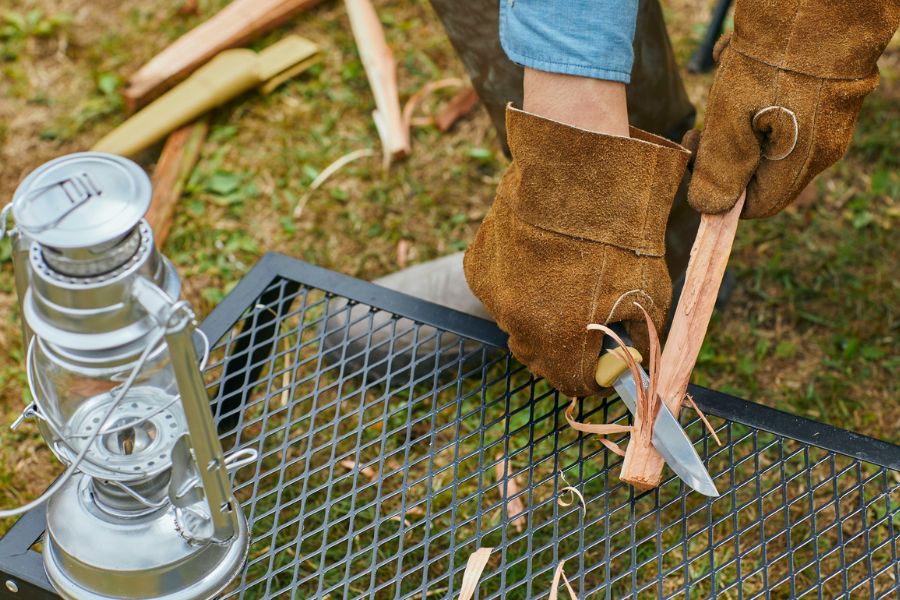
At what age can a child learn to use a bushcraft knife?
Children mature and develop differently, so this is a tricky question. However, depending on the child, around 7 is an excellent time to start to use a bushcraft knife.
What are the best types of bushcraft knives to use with kids?
A good bushcraft knife for a child should be a fixed blade, fit the size of their hand and be lightweight. Mora knives are brilliant options.
Teach kids navigation skills
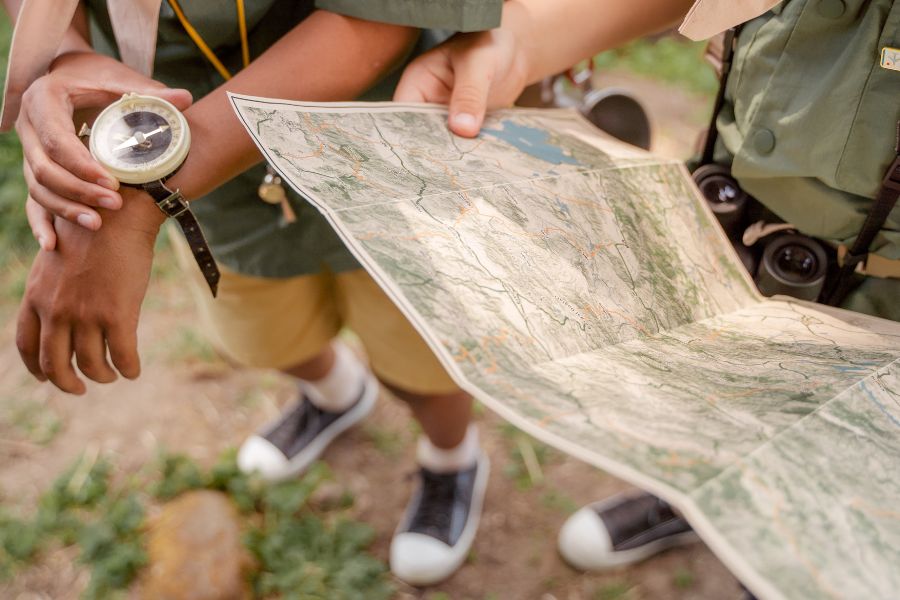
We all have the technology to help us get from place to place on our phones these days. So it’s fun to return to basics and learn compass and map skills. You can find plenty of games online to make this activity fun.
So look for one that works for you and your family, and give it a go.
We hope this article has been helpful. If you have enjoyed learning about bushcraft for kids, why not learn more about forest schools.

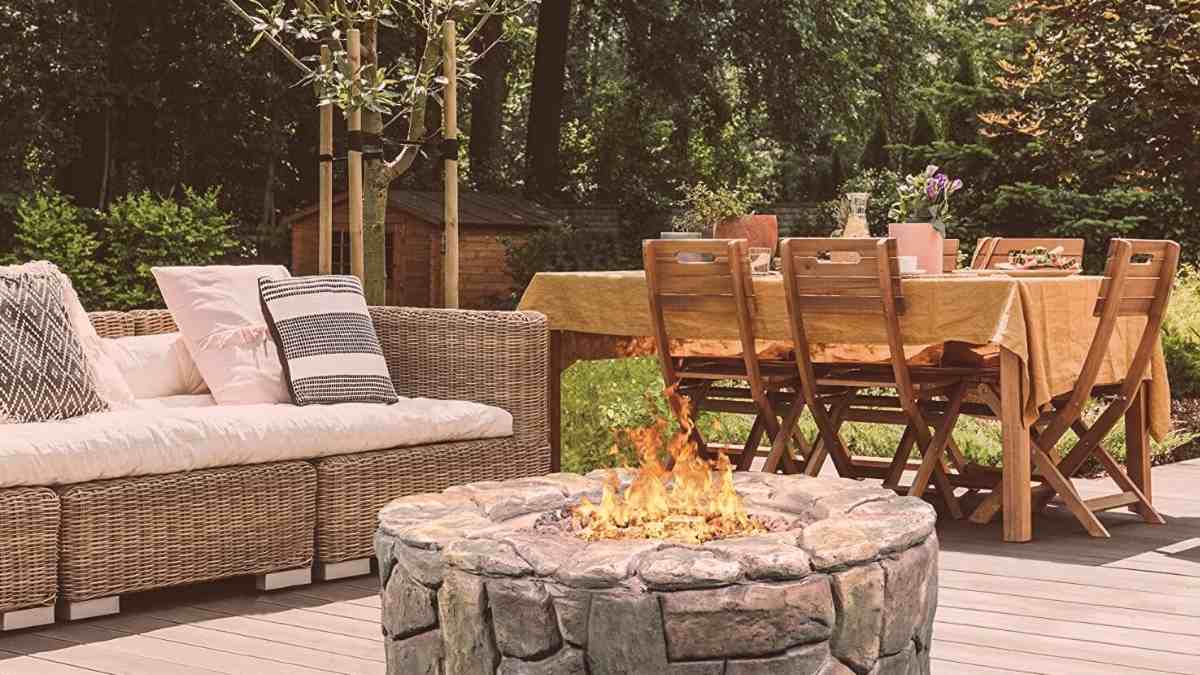


The post is really beneficial and also really inspiring.
Thank you! We are so glad you found it useful.